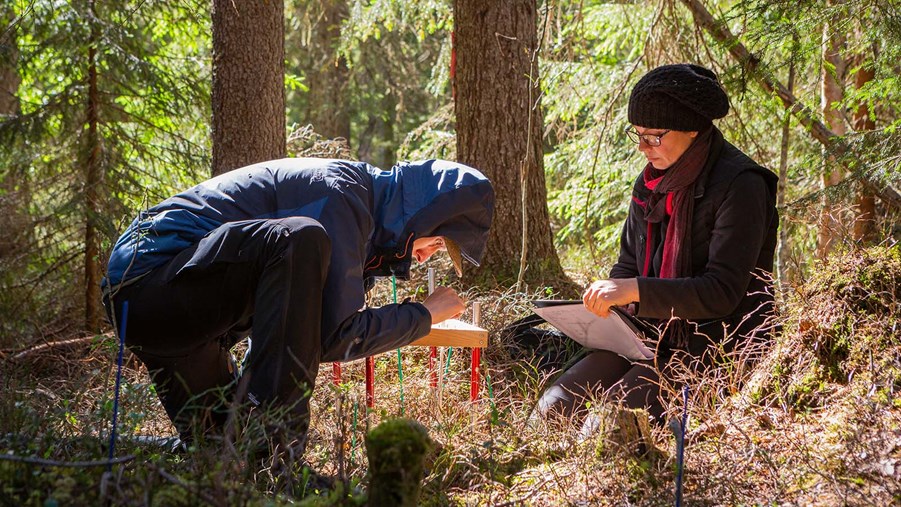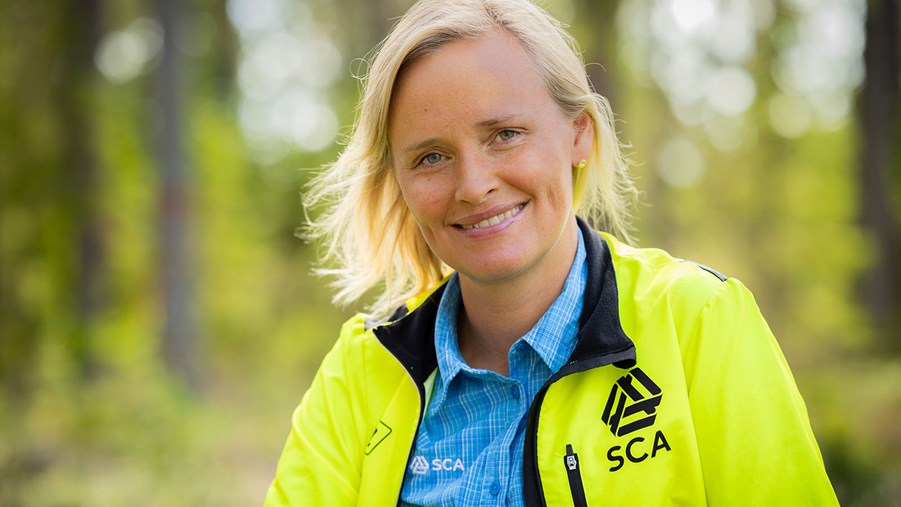
Sweden has twice as much wood in its forests now as it had a century ago, and the forests’ importance is perhaps greater than ever. But is there enough to cover everything we need it for?
“Wood is a renewable raw material but not an infinite resource,” says Karin Fällman Lillqvist, Head of Sustainability at the public service foundation Skogssällskapet, which manage and develop forest properties for private and public forest owners in Sweden, Finland and Latvia.
People love to walk beneath the tree canopy, pick berries and mushrooms and enjoy nature – but beyond recreation, forests also provide economic benefits.
“Going back to the early 20th century, wood was Sweden’s single most important export product. Of Sweden’s total foreign sales, forest-based industry products accounted for 40% by value and employed 20–25% of the population,” explains Jonas Fridman, research director at the Swedish University of Agricultural Sciences (SLU).
The forests have continued to be vital for the nation’s economy, with the forest-based industries currently making up 2.5% of Sweden’s GDP and employing around 120,000 people nationwide.
But how much forest is there? The answer lies in the annual Swedish National Forest Inventory, which is celebrating its centenary this year.
“70% of Sweden’s land area is covered by forest. The whole country has almost three billion cubic metres of growing forests, more than double the figure from a hundred years ago, despite the area of forests being almost the same. 75% of our forests are dominated by conifers and the rest is mixed and broadleaf forests,” says Jonas Fridman.
Counting the number of trees
Each year, SLU visits 18,000 measurement sites spread across Sweden. A little over 5,000 are permanent, while others are chosen at random. After counting the number of trees, living and dead, and the stumps, statistical methods can be used to calculate the entire forest stand’s wood stocks, growth and harvesting. The researchers also look at soil types, bushes, mosses and lichens.
“The first forest inventory was conducted in the 1920s, a time of wood industry expansion that promoted concerns about harvesting exceeding growth. So they started taking measurements to establish the facts,” says Jonas Fridman.
As the aim of the original Swedish Forestry Act from 1903 was to secure the supply of wood for the booming industry, it included the legal requirement to plant new forest after any harvesting. This duty of regeneration still applies, which is why Swedish forests have grown both taller and denser since the turn of the last century.
“It’s important to remember that forestry legislation needs to be dynamic and develop over time, taking account of global changes and new research. The forests we see today are the result of old laws that put production front and centre,” states Karin Fällman Lillqvist.
Sweden's 1993 Forestry Act is based on the principle of freedom with responsibility, and places production goals and environmental goals on equal footing. The Swedish Forest Agency is responsible for ensuring compliance with the law, and can now draw on laser technology and satellite images to help with this. Comparing the results from one year to the next enables them to see how forests are being managed.
“Under the current legislation, every forest owner must show due consideration for nature and work to preserve natural and environmental assets, all the way from planting to harvesting. One of the major challenges in forestry is the long time horizons. The effects of the action we take today will not become apparent for another 20–30 years,” says Karin Fällman Lillqvist.
The same responsibilities
Many people own forests in Sweden, compared with other countries where the State is often the main owner. Almost half of Swedish forests are owned by 320,000 private individuals, while a quarter is in the hands of the State, local authorities and the Church, with the final quarter owned by forest industries companies. The same responsibilities apply to forest owners large and small, although the major forest industries companies tend to have more resources, such as trained ecologists.
Anna Cabrajic is a forest ecologist at SCA in Sundsvall:
“Like all forest owners, we are careful about leaving in place old trees, dead wood, biotopes and other features that are important for biodiversity. We also make sure there are proper buffer zones to protect the habitats that are vital for many species, for example around watercourses.”
About 27% of total forest land in Sweden is is set aside from active forestry. This area includes the land that forest owners voluntarily set aside, but also formally protected forest land, retention patches (areas left after harvesting because they contain assets of high conservation value) and non-productive forest land (such as forested marshes that produce little wood). Working with the forests involves considerable planning over long timeframes.
“The natural and cultural assets we have in a hundred years will depend on how we act and what measures we take today. And it is not just about biodiversity. Old settlements and fishing sites also need preserving,” says Anna Cabrajic.
“As one of Sweden’s biggest forest industries company, we have considerable responsibility. We are under the scrutiny of customers, competitors, investors, stakeholders and the general public at all times, which spurs us on to constantly try to improve and exceed the legal requirements.”
Global warming and the carbon dioxide sequestering capacity of trees have created interest in forests as carbon sinks, plus the renewable raw material from forests being able to replace fossil-based materials and products. But because the perspectives have to be both short and long-term and the issues of economics, employment, diversity, recreation and climate are so intertwined, it is hard to find simple answers. How can the forest provide most benefit?
“It’s easy to get caught up in problems instead of trying to achieve consensus and see the positives in having so much forests here in Sweden. Wood is a renewable raw material, but not an infinite resource, and we want it to do so much, so it’s vital to find the right balance,” concludes Karin Fällman Lillqvist.
Read more about The Forestry Act here
